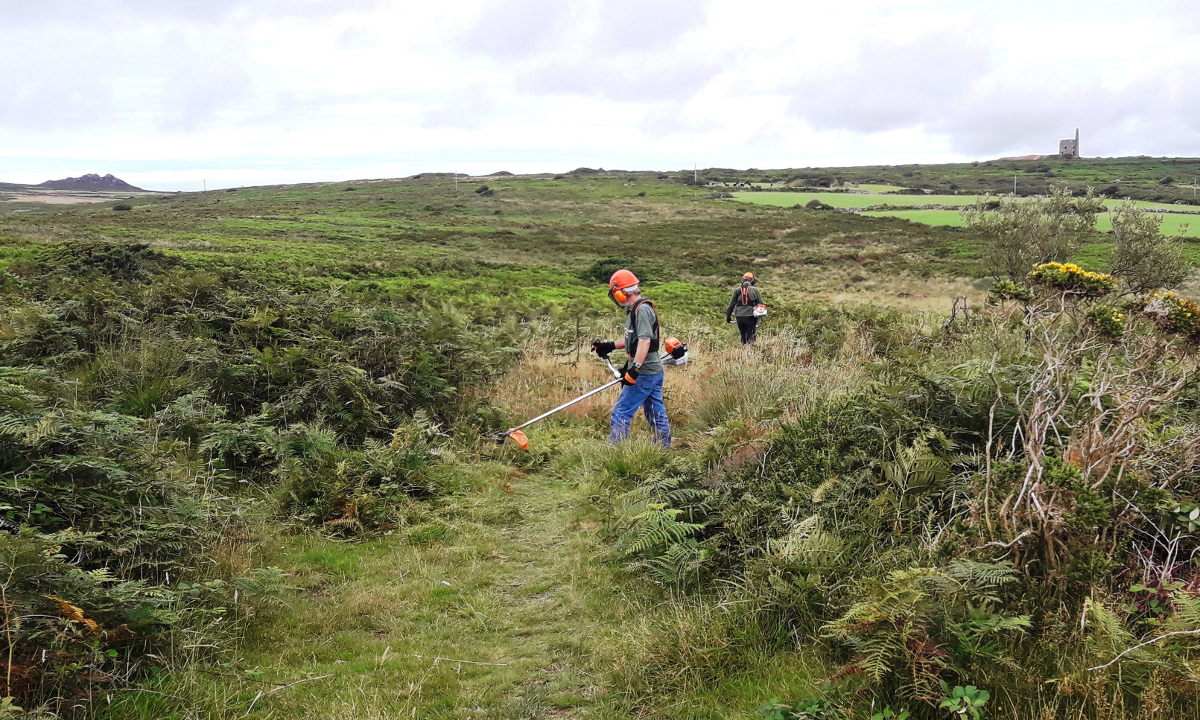 My job as Access Officer for the Penwith Landscape Partnership is all about “improving access to heritage in Penwith, both physically and intellectually.” In physical terms, that means contributing to efforts maintaining Penwith’s network of public footpaths, bridleways and paths on access land, particularly on routes that provide access to archaeological sites, working with volunteers to do so.
My job as Access Officer for the Penwith Landscape Partnership is all about “improving access to heritage in Penwith, both physically and intellectually.” In physical terms, that means contributing to efforts maintaining Penwith’s network of public footpaths, bridleways and paths on access land, particularly on routes that provide access to archaeological sites, working with volunteers to do so.
We’ve had a couple of access projects ongoing through the summer being delivered by our hard working Wednesday and Thursday volunteers and led by Richie, the PLP Practical Tasks Officer. One, on a Public Bridleway between Bosporthennis and Mulfra Commons (and part of the Tinners’ Way), our volunteers have moved three tonnes of rab (local granite subsoil) to build up a badly washed out section, as well as clearance and drainage works. We hope this work has greatly increased the accessibility of this bridleway, for horse riders and walkers alike. The other is near Bartinney, a shared project with between PLP, Ramblers, Cornwall Council, and the West Cornwall Footpath Preservation Society, opening up a long-blocked public footpath; uncovering lost granite stiles, installing gates and building steps. It really feels like this sort of partnership working is what it’s all about. We’re hoping to return to the Bartinney area soon to work on the many overgrown paths there!
I’ve recently established a weekly session in addition to the Wednesday & Thursday volunteer tasks, going out with a brushcutter to trim lesser-maintained paths, inviting volunteers to join me. I have a couple of regulars so far. A training course is required to use the brushcutter; We’ve put a handful of volunteers through the training already, and are seeking to organise another course.
In terms of improving “intellectual” access to heritage - this is all about promotion of routes. A set of “trails” in Penwith were identified during the development phase that link together ancient sites. I’m working on writing guide material for these trails, producing maps and text and working with volunteers for research. A fascinating process, especially for a rainy day. Now that our new website is up and running, we’ve got a great platform on which to share this information.
The two things, physical and intellectual, go hand in hand. Overgrown paths don’t get used, and so grow in even more; whereas a well-used path generally requires less effort to maintain it. Show people where to go and what they might find there, inspire to explore, whilst on the ground making these places visible. Alongside, enthusing anyone and everyone to take an active part in the upkeep of our path networks – that’s the legacy.



